On the dancefloor at Boa Redux. Photo courtesy of Carey Britt.
Article originally published June 10, 2013 by The Grid online (thegridto.com).
In the 1990s, Boa Café was one the city’s busiest late night hangouts; in the mid-2000s, its second incarnation –a much larger, full-blown dance club– was hailed as the best-sounding. But with high expenses and no liquor licence, the party couldn’t last for long.
BY: DENISE BENSON
Club: Boa Redux, 270 Spadina Ave.
Years in operation: 2003–2005
History: In an earlier edition of Then & Now, we explored the story of Rony Hitti’s 1990s Yorkville hotspot, Boa Café. By the time Hitti closed the Café in 1998, he owned a number of other fine-dining establishments, including Brasserie Zola and Winston’s. A few years later, he closed the book on his life as a restaurateur, keen instead to open a large underground dance club, which had been a dream for decades. Hitti would soon bring Boa’s name to a new generation by creating an after-hours venue of a much different nature than its predecessor.
“Boa Redux came out of my desire to have a house club in Toronto similar to Montreal’s Stereo,” he begins.
Hitti spent two years searching for the right location. A real-estate agent took him to 270 Spadina Ave., former home of a rundown porn theatre. At 16,000 square feet, with soaring ceilings and multiple levels, the space had great potential.
A big staircase dominated the room, its large steps each allowing a view of the entire area. A separate lounge space would be built on the lowest level, also to serve as the club’s entrance. There was an existing stage, later to be utilized both for dancing and late-night performances. In total, Boa would have a legal capacity of more than 1,300 people, an ideal size for a club purpose-built to feature some of the globe’s top underground DJs in a city that continued to have a thriving late-night scene in its post-rave years.
“It took us almost nine months to build Boa Redux,” states Hitti. “We stripped it down to the ground, and built the perfect acoustic room.
“People say that Boa had a great sound system, but it wasn’t just about the system. It was actually what we put into the walls, ceilings, and floors. We built completely sound-neutral rooms, and then went with a Dynacord system, which made Boa what it was. I believe that if you own a restaurant, you spend money in the kitchen first, and if you’re building a club, you put your money in sound, and then work outward. Every inch of that room was done with sound in mind.”
Also core to the identity and function of Boa Redux was the fact that the club would operate specifically during late-night hours, and without a liquor licence.
“There were two reasons for that. One, the liquor board hated my guts because for 10 years they tried to shut Boa Café in Yorkville down, and they couldn’t. I knew that if I wanted to licence a space that big, I’d be in for a big fight. I also knew that I would have a fight with [then city councillor] Olivia Chow, because the area over there was not licensed for clubs of that size. I got around that by making it into public hall. I love challenges.
“On top of all that, honestly, the house-music scene is not conducive to liquor, and vice versa.”
In order to court in-the-know clubbers, Hitti hired a team of talent bookers and promoters that included Ralf Madi and Carey Britt. Madi had worked at The Guvernment while Britt was a booker for Most Wanted Entertainment. The two men had also collaborated on numerous productions, including under the Project Orange banner. They knew Toronto’s big-room scene well, and got to work crafting Boa’s musical focus months in advance of opening.
“Without Carey and Ralf, Boa Redux would not have happened,” credits Hitti. “Certainly not the way that it did.”
After a few “soft launch” parties featuring DJ Sean Miller in its lounge, Boa Redux announced itself on a larger scale with the booking of Sander Kleinenberg in December 2003. By January 2004, the new Boa was in full swing.

Sander Kleinenberg (December 2003) was the first large production at Boa Redux. Flyer courtesy of Jeff Button.
Why it was important: “You would never know that Boa was a club from the outside,” says Sean Miller, the DJ/producer who became the club’s star resident. “You’d come in the back door, and just be transported to another world.
“I’d never been to anything like it before. Rony spared no expense on the sound. He brought in that Dynacord system, and even flew in the engineers from Germany. Nobody else was putting that kind of attention into sound [in Toronto].”
It is the incredible quality of sound at Boa Redux that most defines its reputation to this day.
“It was a floating room, meaning that the floors were raised and hollow, there was a drop ceiling, and the walls were built out from the exterior walls and insulated,” explains Britt. “I have heard the same Dynacord sound system in clubs like Space Miami, Pacha New York, and The Docks, but none of them came even close to sounding as good as Boa’s room.
“Coming up [from the entrance], you would get a taste of the sound building and, as you approached the top of those stairs, the sound and vibe in the room was enough to put a smile on anyone’s face. The floors were also built on different levels, which created an awesome feeling for the DJ and the crowd, with heads and bodies bouncing at all different levels.”
As Boa’s Music Director and Marketing Manager, Britt was most responsible for the DJs who entertained those bodies and put Boa’s sound system to the test. At the start, he worked most closely with Madi, as well as respected club promoter Edward “Eddy K” Kwak and Erica Kelly, a young clubber who Eddy suggested be brought on board for her impressive street-promotion skills and guest-list abilities.
When Madi left Boa in July 2004 to open Century Room, Kelly was promoted to work full-time as Boa’s Promotions and Marketing Manager. (Madi is now one of the forces behind Capture Group, owners of Maison Mercer, Blowfish Restaurant, and many other enterprises.)
Collectively, they decided to focus Boa’s programming on emergent artists and sounds, with a focus on both local and international talent.
“At the time, the competing clubs were all booking the biggest names in the game,” explains Britt. “Strategically, we made a decision to focus on a more a underground sound, and prided ourselves on featuring talent that either rarely played the city, or had never been here before. We debuted artists like DJ Demi and Chus+Ceballos, and worked closely with the Def Mix crew.”
Demi was signed to a bi-monthly residency, Chus+Ceballos played quarterly, and a monthly Def Mix showcase offered appearances by house-music legends like David Morales, Frankie Knuckles, Satoshi Tomiie, and Hector Romero.
“The [Def Mix guys] rarely appeared in the city post-Industry, and they made Boa their home,” says Britt.
Boa may not have had the budget or connections of competing clubs like The Guvernment and System Soundbar, but the team was creative.
“Carey found the buzz, the good new music, and we had to make it grow to suit a venue of that size,” credits Erica Kelly.
“We visited history-makers like Jeff Mills and Frankie Knuckles while building followings for today’s Toronto favourites, like The Martinez Brothers. With Boa you could always trust that you were going to hear something amazing, not because it was the guaranteed name to book in the past, but because it was someone who should be booked, someone you should know about.”
Toronto’s own Sean Miller was exactly that. Though he’d come up playing raves and a number of parties produced by Britt, Miller was far from a well-known name in this city when he started as Boa’s main Saturday DJ.
“Sean Miller was our one and only true resident, and it helped launch his career,” Hitti tells me with pride. “I love his music; he plays such sexy house. The deep, dirty tribal house sound we were famous for was all Sean.”
When Miller started spinning every Saturday at Boa, he had just begun producing. He’d generally play from 1 to 4 a.m., warming up for international headliners. “I’d focus on setting the atmosphere and making people feel good,” Miller explains.
As time went on and crowds responded, Miller was often booked to play extended sets, sometimes DJing from 1 a.m. through to noon the next day.
“That taught me so much about how to play to a bigger audience, about DJing and performance, and about how to take people on a journey.”
These were especially helpful skills as Miller’s career exploded, with releases on labels including Chus+Ceballos’ Stereo, Steve Lawler’s Viva Music, Anja Schneider’s Mobilee, and Satoshi Tomiie’s Saw Recordings soon taking him around the world.
Miller may have moved to playing Boa only once or twice monthly—with DJs including Nevio and Kenny Glasgow stepping in as fellow Saturday-night residents—but his Afterhours mix CD, recorded in 2004, is still revered by regulars of the club. (We present it here, in digital form for the first time.)
When asked what, in addition to its sound, most made Boa Redux a unique experience to him, Miller has no shortage of answers.
“First and foremost was the space itself, as an old theatre,” he describes. “There was also the fact that it wasn’t in the club district. Whoever came to Boa was committed to us the whole night. It didn’t open until 1 a.m., and the headliners went on at 4 a.m., so people could come after other experiences. We had a bit of a different, older crowd. It was expensive to get in—like $30 or $40—because there was no other revenue stream, and it was very much based around the guest DJs.
“It was also a different kind of after-hours experience. I’d say it was an upscale after-hours. It wasn’t like places where people would be tweaking out hard. From my perspective—and I never did drugs there—people were pretty much together. People were there for the music, and to dance.”
“The crowd was incredibly diverse,” adds Britt. “That was one of the things that made that place so special, and the vibe so incredible. Saturday nights in particular, you would see all different types: downtown crowds that were out specifically for music, the Church Street crowd migrated west, suburban kids, and suits coming from clubs on King Street who wanted to keep it going. There was no VIP section, everyone was respected, and people came to have a good time.”
“If I fit in, you fit in,” echoes Kelly. “It didn’t matter what your deal was. I met old-school rave icons, Yorkville salon owners, lawyers, doctors, strippers, and bodybuilders, models, teachers, audio fanatics, breakdancers, artists, and international DJs. Even Tiesto came through one night.
“I have no idea how the street kids found the money to be there, but they were there, too,” she adds. “You always knew someone in the room, and never met anyone that ruined your night.”
Boa’s steep cover charges may have skewed its crowd to the older and more fashion-conscious end of the dance club spectrum, but one had to appreciate the venue’s commitment to the basics.
“Boa wasn’t about bottle service, clamouring to get into VIP areas, or shiny bling-y things,” Kelly emphasizes. “It was grungy furniture you could dance on, and mismatched linoleum tiles—with heel scuffs and old gum marks—that made it the perfect place to dance on any level. Wherever you were, that was your space. You could see everything, you could hear everything, you could feel everything. In that one huge main room, we were all there to hear the best in cutting-edge underground music.”
Who else played/worked there: When asked about standout events at Boa Redux, everyone I speak with mentions the June 2004 appearance of New York’s Danny Tenaglia, who played to more than 3,000 people over the course of a marathon 18-hour set. It had been years since Tenaglia had played Toronto, and the Boa team worked hard to bring him to their club.
“Carey booked a lot of DJs who were Danny’s protégés in order to get word into his ear about what a great club Boa was,” shares Hitti. “We landed him for a Canada Day party. He loved Boa, and played longer than anyone else ever played there. It was magnificent, and absolutely the vision I’d had of the room.”
Tenaglia did indeed love Boa, and signed the club’s stage to say exactly that.
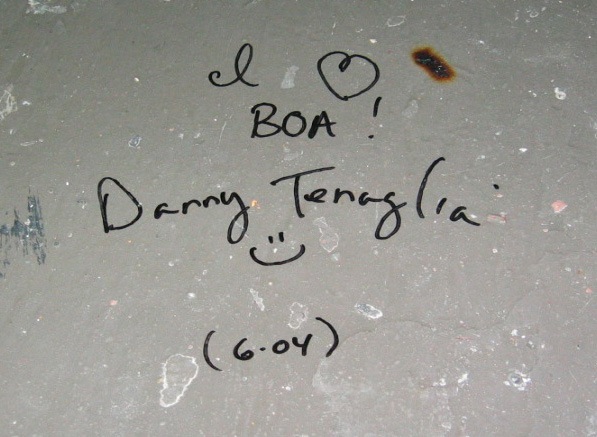
Danny Tenaglia’s appreciation of Boa Redux signed on the club’s stage. Photo courtesy of Carey Britt.
Another event that put Boa Redux on the map, both locally and globally, was the X-Tend Your New Year blowout that brought in the year 2005. That party went for two days, with more than 4,000 people attending to hear a massive lineup of DJs that included David Morales, Tom Stephan, Saeed Younan, Cevin Fisher, Chus+ Ceballos, Demi, Miller and more than 20 other Toronto talents.
British DJ/producer Demi may well have played Boa more than any other international guest. Live mixes from his many appearances can easily be found online, including his full set from BringtheBeat’s “Mad Hatter” event in October 2004.
Friday nights at Boa may not have attracted the large, consistent crowds of Saturdays (“It’s very hard to do an after-hours on Fridays; Fridays, you need liquor,” says Hitti), but they certainly were interesting.
“Fridays were our night to take risks outside the tribal and progressive house genres emphasized so heavily on Saturdays,” explains Kelly.
Fridays featured a lot of impressive local talent, including parties like Chemistry, with DJs including Matt Coleridge, John Tremblay and The Dukes, and Hustlin’ with DJs Mat Lunnen and Mike Gleeson. Black Light Activists produced a number of psy-trance events, complete with their signature glowing artwork. There were occasional breaks events, with DJs including The Phat Conductor, Big League Chu, and Dave Saddler. Other locals who played Fridays included Mischief & Frankie, Mario J, Adam Marshall, Robb G, Jon Tremblay, Lady Lindzee, Jason Hodges, Jonny White, and Nitin.
Fridays later moved to more of a one-off, international-headliner format, with names that included Derrick Carter, Stacey Pullen, Jeff Mills, Miguel Migs, Kaskade, and early Toronto appearances by both Claude VonStroke and Tiefschwarz. Lovers of deeper, funky house will also associate Boa’s Fridays with DJ/producer Phil Weeks and showcases of his Robsoul Recordings. (This live recording from November 2004 is an absolute gem.)
And while DJs of all sounds and stripes pounded out the beats in Boa’s main room, DJs like the supremely soulful Jermaine Brown brought a more chill, funky sensibility to Boa’s lower lounge.
Just as this is not a comprehensive list of all who DJed at Boa Redux, it is equally impossible to list all of the promoters, bartenders, door staff and others who made the club function. Kelly mentions that other key promoters included Kevin Noel (now of Platform), Jeff Button (now best known as a DJ), and Pat Boogie (Boogie Inc.). Hitti gives props to head bartender Bart (now general manager at Yorkville’s Amber bar) and head doorman Edwin Harris (now at Club V).
“Edwin was probably the most patient person heading a door I have ever met,” agrees Britt, who also makes mention of two other staffers. “Li, the tech, was the hardest-working guy in the club, always taking care of the sound and lights like they were his kids. And Justin, who headed up operations—that guy could move a mountain if you gave him 10 minutes.”
What happened to it: Boa Redux made a big splash, but had a storied crash, complete with rumours, innuendo and infighting. Legal battles that ate up a great deal of Boa’s 2005 and Hitti’s cash also played a huge role.
“We faced a very big problem with our landlord,” states Hitti. “He wasn’t happy with what we were running, even though he knew in the first place. Also, we were demanding a brand-new air-conditioning system because it was boiling in there in summertime. It got to the point where we went into litigation with the landlord—it was a $250,000 air-conditioning system that needed to go in.”
Kelly, who stayed on at Boa after Britt and others had quit, confirms that an expensive “year-long court case against the landlord” took its toll.
“When Carey decided to leave, it was a really hard decision for me to stay,” she says. “I understood that financially we were losing friends fast, but I just didn’t want to give up on something that I knew was the greatest place in Toronto.
“The summer of 2005, we had almost paid off the sound system, and I remember feeling like it was finally the time we had be working toward—no more pay cuts, no more putting off payments, no more struggling.”
Alas, the court case was decided in the landlord’s favour, and other factors kicked in. While Hitti says he had been attempting to negotiate with the landlord, other people, including Nevio Persia and David Morales, are reported to have made a separate offer.
“They offered him twice the rent that I was paying, and said they’d put in their own air-conditioning unit,” claims Hitti. “[The landlord] stopped cooperating with us, and things got ugly over a period of many months. I decided I didn’t want to do it any more. It was lucrative, but I had other businesses that were lucrative. We got out of it, and [Persia and Morales] promptly took it over and changed it into Sonic.”
Boa closed with a big party on August 28, 2005. Sean Miller played a 12-hour set. Miller also went on to DJ at Sonic, which opened late April 2006 and closed less than a year later.
“I left before Sonic closed,” says Miller. “It never really had what Boa had and, by that point, my career had really taken off. I was playing all over the world.”
Miller continues to tour globally, and plays occasionally on home turf. (“I sort of lost touch with Toronto, and my goal is to find a residency here.”) His next release will be the This Is That EP, out soon on Josh Wink’s Ovum label, and he is at work on a collaborative project with legendary guitarist and vocalist Jose Feliciano.
Like Miller, Britt worked at Sonic, but feels its Boa’s legacy that remains.
“Although there was quality renovation, and a great sound system in the room, [Sonic] never quite stood up to what Boa was able to do,” Britt says. “There was something really raw, mysterious, and underground about Boa. No one has quite been able to replicate it.” (Britt currently heads the Canadian music and entertainment initiatives for global marketing agency GMR Marketing.)
Hitti himself wasn’t able to replicate Boa Redux, though he tried with a short run of events at 360 Adelaide St. W., former home of clubs including Turbo. He also produced a number of parties at 99 Sudbury, before its renovations, where parts of Boa’s sound system were put to good use.
Hitti still owns the system, but claims to be “retired” from the club and restaurant business, other than as a consultant. He did design short-lived Peter Street venue Abode, but legal issues put a halt to its operation. (“The liquor board said they wanted to ban me from even entering the space, and that had to do with a charge from Boa in Yorkville going back to 1997. They put me through the roughest trial you could imagine.” Hitti says he is suing the liquor board “for slandering my name.”)
Hitti is now co-owner of D’Hacro Corp, a venture capital and finance corporation. He also tells me that he and his Hong Kong-based brother own a bank in that financial centre. (Related web links do not appear to exist.)
“There’s a lot more to me than restaurants and clubs, although they were always my passion,” says Hitti. “I do find the world of finance boring as hell. I’m the guy who always shows up without a suit and tie.”
As for Erica Kelly, who followed Hitti to Boa Redux on Adelaide and then worked as Operations Manager at Sonic, she went on to bartend at Footwork, as well as work at clubs including Sound Academy and CiRCA. Although she now works for an airline, Kelly can occasionally be found holding down door duties for some of her favourite promoters and events.
“Looking back, it’s amazing that Toronto was able to create and support a venue of Boa’s size with no liquor licence,” Kelly reflects. “It was a financial struggle, and it didn’t last forever, but I’m glad we tried.”
270 Spadina is slated to reopen as the 10-storey Dragon Condos in 2015.
Thank you to participants Carey Britt, Erica Kelly, Rony Hitti, and Sean Miller, as well as to DJ Demi, Jeff Button, Mat Lunnen, and Ralf Madi.

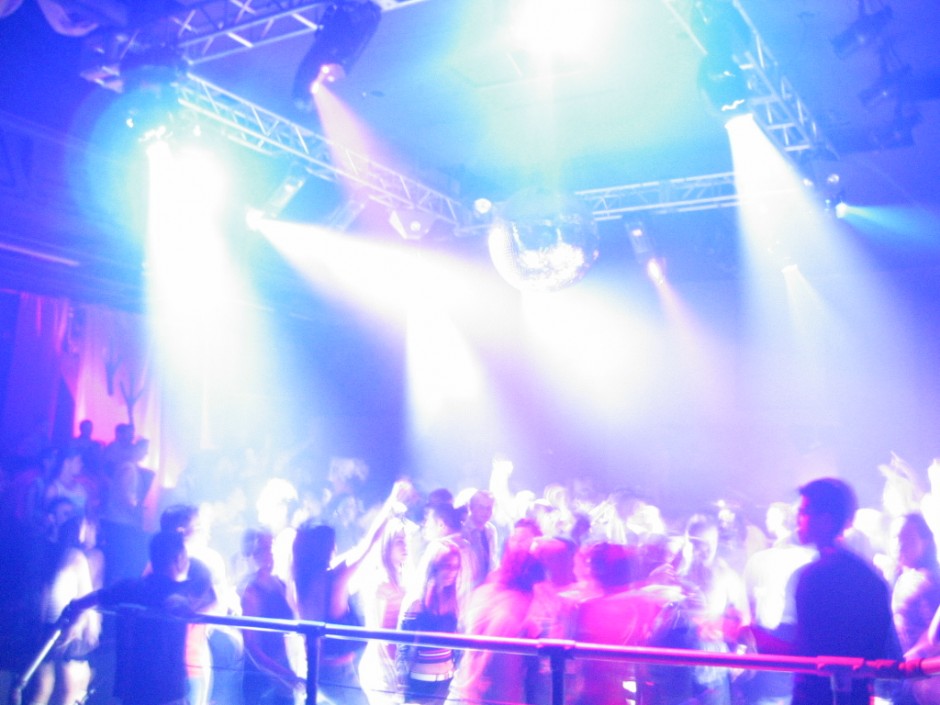
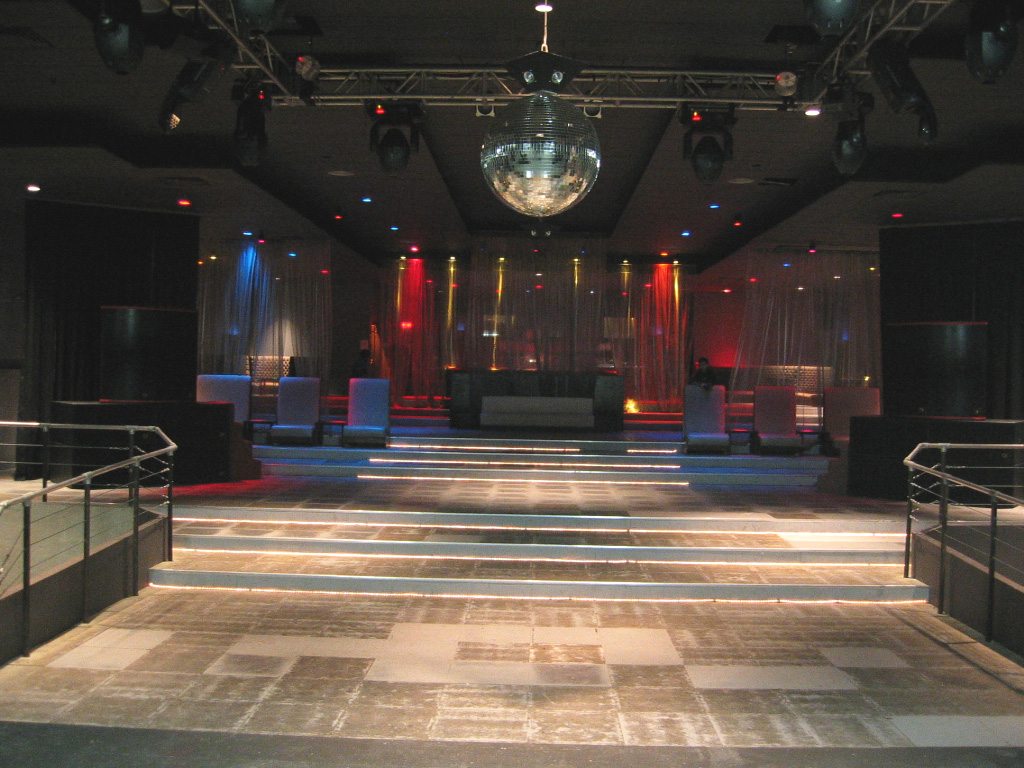
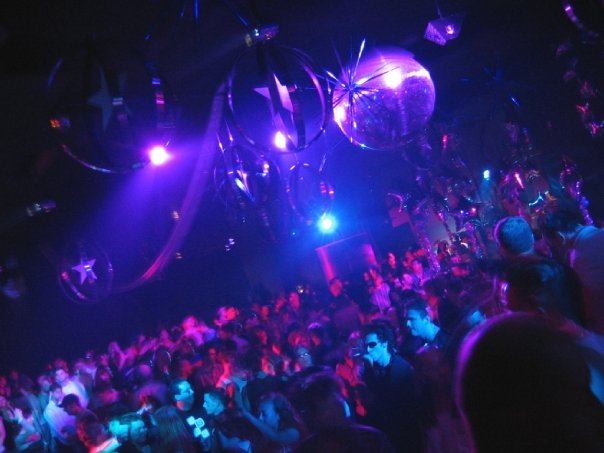
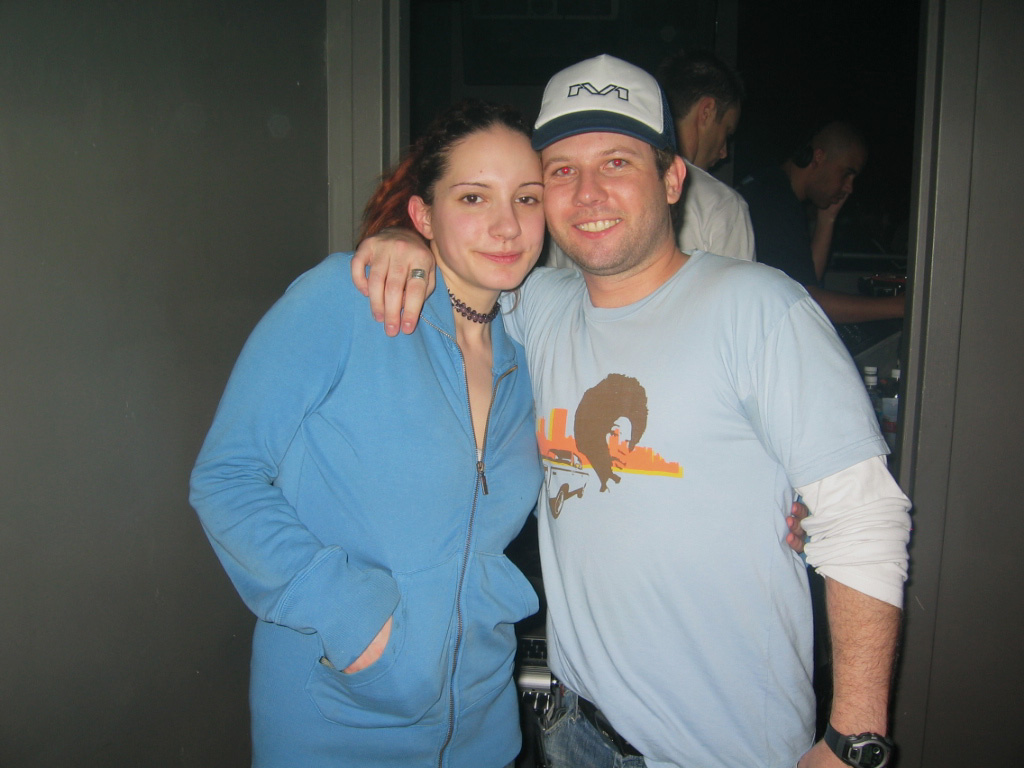
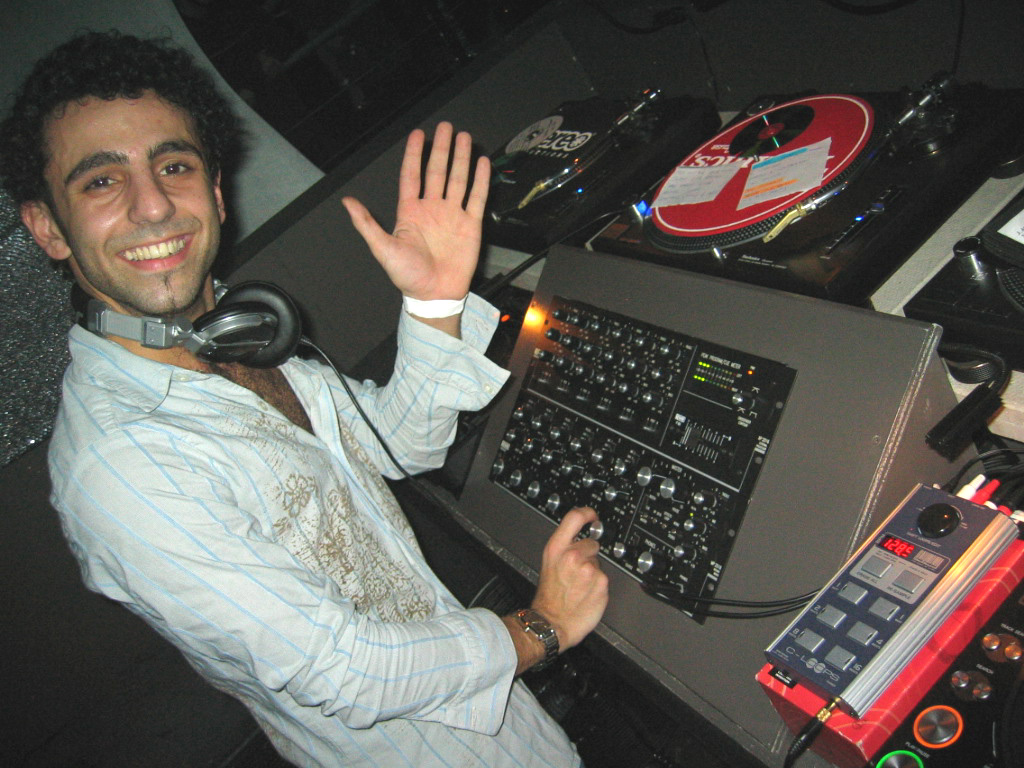
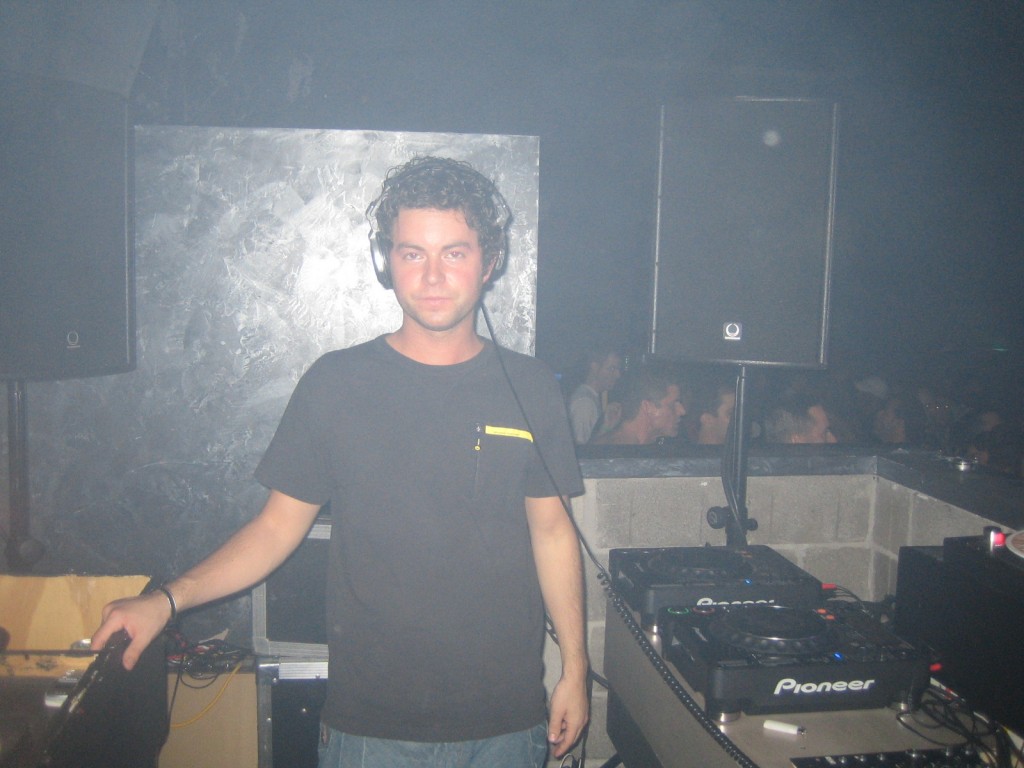
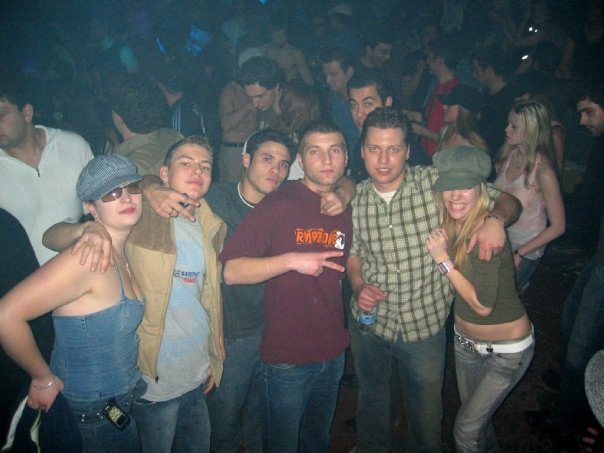
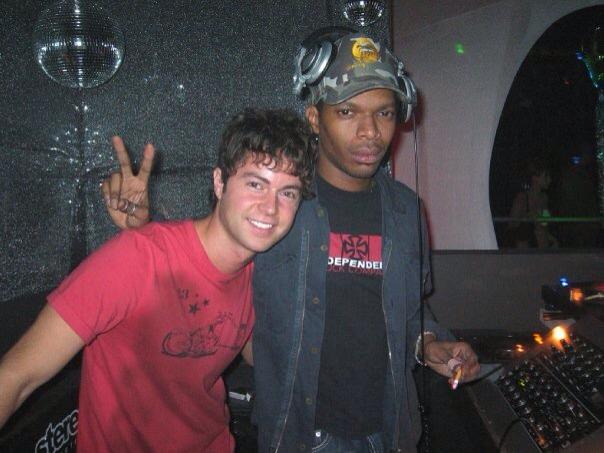
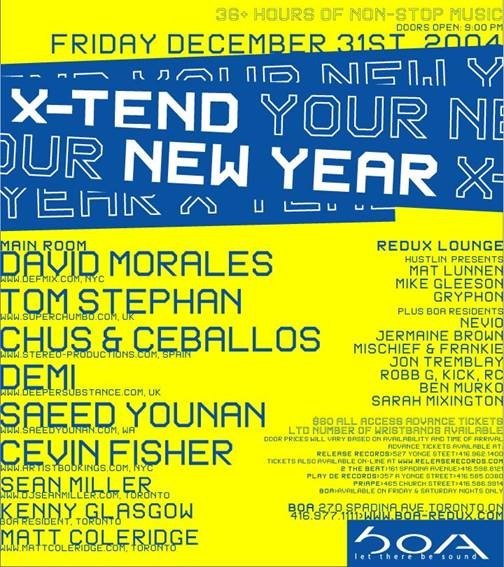
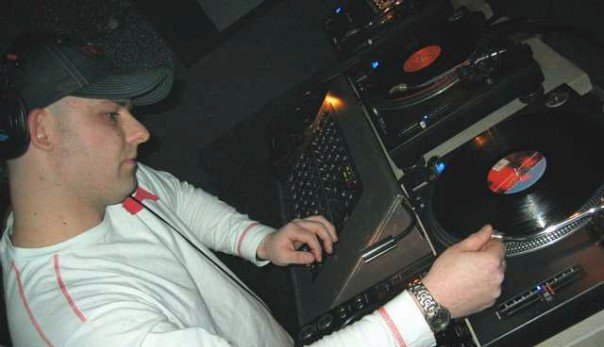

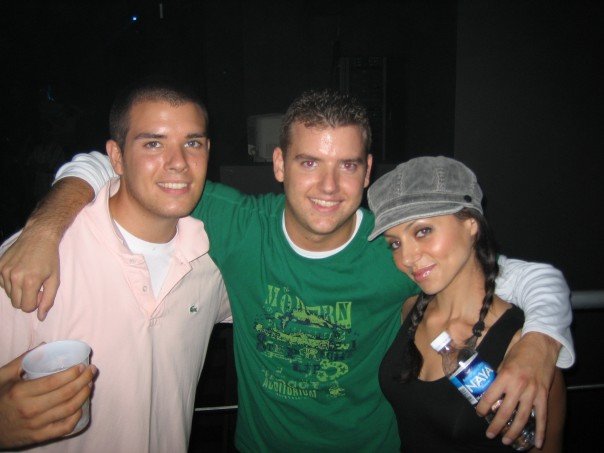
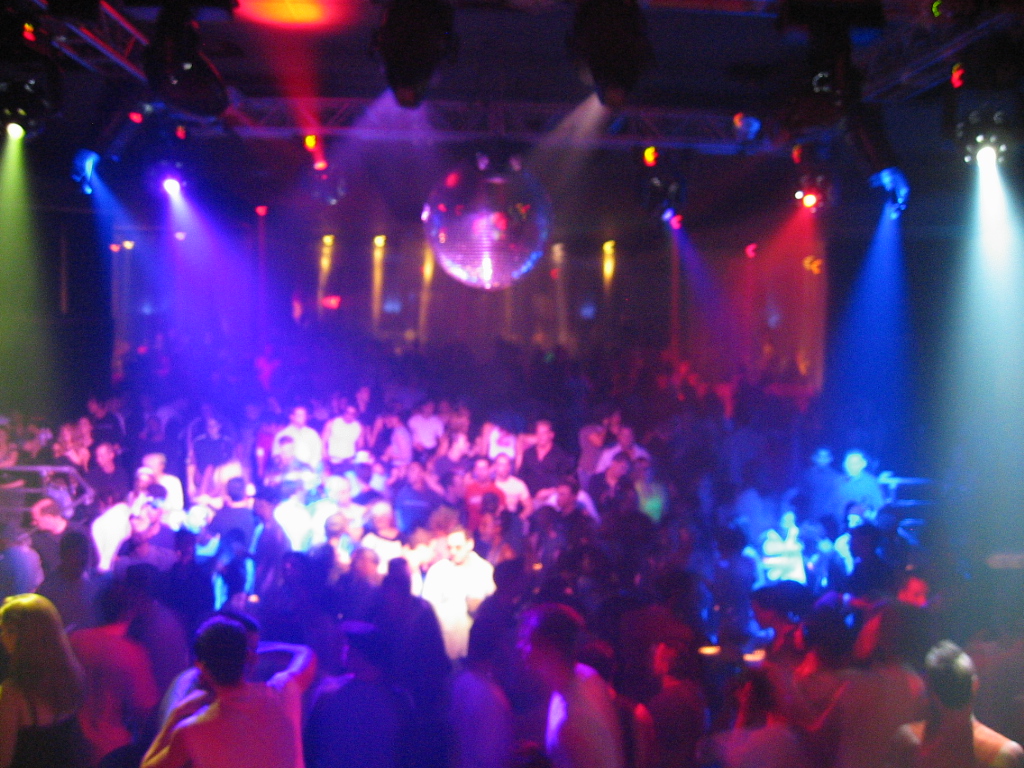
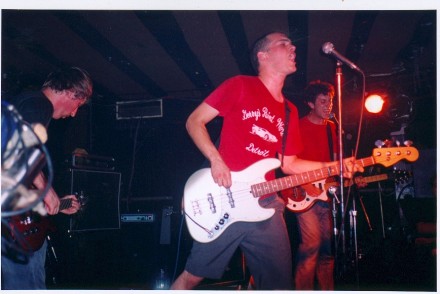
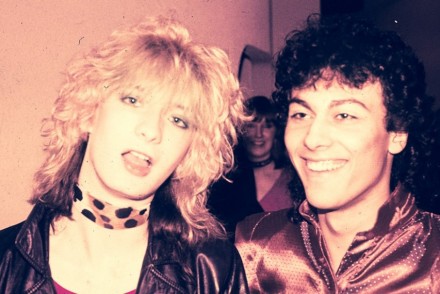
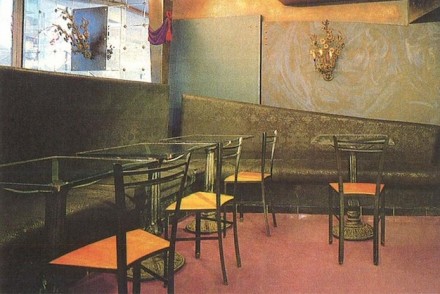

3 Comments
Lots of nostalgia reading this article as I moved to Sydney in 2005 and Boa just spoiled the clubbing experience for because it was just that goddamn good for all the reasons this article has pointed out. Enough said.
Miguel Migs at Boa goes down as one of my favorite all time parties of the 2000′s. Legendary!
All comments in the string below have been republished from their original appearance on The Grid website. We’re including the readers’ comments as they add to these Then & Now stories. We look forward to reading new comments here as well.
Rebel Underground
It is a well-researched article that points out all the ups and downs that the club went through. Definitely something to reminisce for those who were able to experience it. It had a very underground-ish vibe and patrons were there to have fun regardless of gender, ethnicity, and the like. People were there for the music which was nothing but jaw-dropping. Good things come to an end and this was no exception. The infighting didn’t help at all. It is at times easy to get lost in the finger-pointing and this proved to be the rule. Especially when there are parties seeking to protect their interests. Even individuals -within their respective parties- tend to toot their own horns and, in those cases, consensus is even harder to reach. The fan and clubber along the music enthusiast end up also loosing. On a more positive note, Sean Miller was one of the highlights as he proved to be one of the most technically skilled DJs the city has ever seen. It was a treat to watch and listen him warm up the room until he had the crowd eating right from the palm of his hand. Playing records while educating a crowd is a skill that not too many DJs can boast to have despite all the technology available. On any given night, he started things off with low bpm records and the set had more of an experimental tone- tracks played for listening purposes and to timidly get people onto the dancefloor. As the night progressed the basslines and sexy vocals rolled in and the drums were inviting. It was the time to enter into tribal territory and hard not to get focused into the experience that was Boa. Memories that speak for a short-lived club that leaves long-lasting musical footprints into the mind of those that for one reason or another were part of the Boa dancefloor. 10:41 pm on June 14, 2013
rave dave
Another great piece from Denise B. Tings come and go but Toronto Rocks 10:32 pm on June 11, 2013
Duke
Toronto has no respect for the nightclub. Wish there were more people trying to build venues like this instead douchebag bottle service joints. Even those are under assault. Clubs in particular are paying the price – but TO is definitely losing its soul to “Condo is King” movement, the boxes in the sky that people rent for 5 years before moving to the burbs. TO has places to work, live but not play? C’mon people let’s have some fun again. 2:48 am on June 11, 2013
Jake
Wow, another great Toronto location torn down for another condo. You don’t say? 1:06 pm on June 10, 2013
Max
Absolutely my favourite club in all of Toronto, ever. Boa was lightning in a bottle. 11:01 am on June 10, 2013